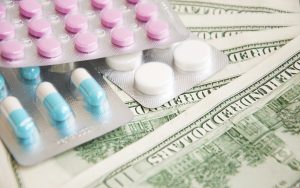Our nation has been fighting a silent killer for the past few decades. It’s taking the lives of mothers, fathers, teachers, doctors, and even the person who may be living down the end of your street. This killer is the use of opioids that typically is being prescribed for treating a patient’s pain after surgery, after an injury, or for dealing with another pain management related reason.
Thanks to the pharmaceutical industry, opioids are easily accessible and have been pushed out as the go-to method for anyone who requests it under doctor permission. What’s scary is that these pharmaceutical companies failed to educate its end consumers on opioid withdrawal symptoms and the possible risks it brings to their lives overall. Doctors are often prescribing the alleged medications without thinking twice about their patient’s tendencies to develop addiction either. Anyone can easily become addicted to opioids since produces an immediate wave of relaxation and pleasure after every dosage. To understand how opioids have become such a problem in our communities, let’s look at how the drug became so widespread and how it may be even affecting someone you know.
The Growth Of Opioids
At this point in time, the opioid epidemic is taking the lives of roughly 115 Americans a day. That’s a huge number stemming from just overdose related accidents from the drug. Starting in the 1990s, prescription painkillers became highly distributed and have lead to increasing rates of hospitalizations, overdoses, and deaths each year. Back in that decade, multiple television outlets ran advertisements for medications so any patient could request painkiller prescriptions by its name. In turn, working in conjunction with their drug companies, doctors began prescribing painkillers in sky high numbers. In 2011, doctors reported to write a total of 238 million opioid prescriptions. Overall, experts estimate that the epidemic is currently affecting 2.1 million Americans who are diagnosed with an opioid addiction. That statistic only touches on the individuals who actually went to their healthcare providers and reported their use while seeking rehab treatment. Some of the most common forms of opioids arehydrocodone, oxycodone or Oxycontin, morphine, codeine, and fentanyl.
Within the past two years, deaths have also increased by forms of synthetic opioids as well. In the year of 2016 alone, almost a third of all drug related deaths and half of all opioid deaths stemmed from a synthetic substance. These drugs are illegally manufactured and are being widely distributed in the pill from throughout urban areas of America. What’s worse, a lot of these pills contain traces of other addictive drugs like cocaine, marijuana, and heroin for added side effects to the user. Either way, it’s clear that this epidemic must be dealt with on the individual level with proper education and effective rehab treatment so more overdoses don’t happen.

Accelerated Opiate Detox
In order for someone to get off their dependence of opioids, consistence detox treatment is critical. However, what makes it hard for most people with addiction is that opioids bring severe and often painful withdrawal symptoms. Medications that are prescribed to these patients also bring their own share of side effects, which only creates a longer list of headaches to deal with. This makes it easy to understand why some addicts would rather continue their use of opioids and bear the consequences than go through weeks to months of relapse or painful withdrawal.
Luckily, as of this year, the rehab treatment industry has developed a noninvasive tool for patients to deal with their cravings without experience high pain levels. This tool is called BRIDGE, and is an attached device recently cleared by the FDA for opioid withdrawal pain management. Interest in the device has grown mainly in many western states like California and Alaska where the political climate tends to be more liberal. In eastern states, people have reported feeling more skeptical of its benefits without seeing published data. As far as manufacturing goes, the device is being developed and distributed from a center in central Indiana.It works by connecting to a patient’s earlobe and emitting a subtle nerve stimulator meant to help alleviate pain. For most, the device begins to feel noticeable after they get into habit of wearing it throughout the day. While it is not meant to completely cure addiction, it does help an individual cope through the worst of the detoxification process. The great thing about the BRIDGE is that most patients feel lower amounts of pain and mental health issues within 15 to 30 minutes of attaching the device. After the device is worn consistently over time, patients are then able to see an overall improvement in their physical and mental state compared to before.
Deal With Pain Management
Thanks to new inventions like the BRIDGE device, people who seek accelerated opioid detox have an option without spending fortunes on medications that may along bring more side effects. Depending on the length and severity of a person’s addiction to opioids, their body may have to make serious readjustments as they start using the device to function normally again.
The first step anyone should take is to visit a detox center in their local area so they can gain awareness of their situation. From there, they may be assigned a counselor or a specific detox plan that includes using the BRIDGE device from home. The device is currently only accessible from permission from a certified detox center, so it’s important to make a visit to the resource as soon as possible. While learning about using the device and what lifestyle or diet changes to make, a person should never lose hope for regaining a stronger, happier, and healthier body. Relapses can always happen but that shouldn’t be an excuse to completely drop the ball on recovery. We are all in this journey together!
